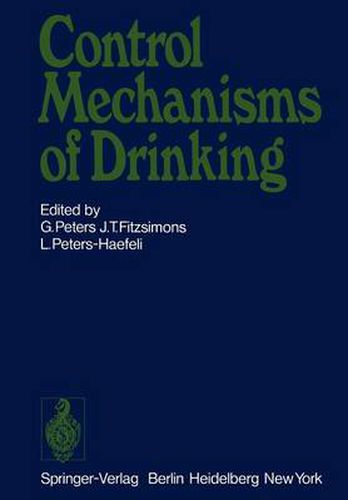Readings Newsletter
Become a Readings Member to make your shopping experience even easier.
Sign in or sign up for free!
You’re not far away from qualifying for FREE standard shipping within Australia
You’ve qualified for FREE standard shipping within Australia
The cart is loading…






This title is printed to order. This book may have been self-published. If so, we cannot guarantee the quality of the content. In the main most books will have gone through the editing process however some may not. We therefore suggest that you be aware of this before ordering this book. If in doubt check either the author or publisher’s details as we are unable to accept any returns unless they are faulty. Please contact us if you have any questions.
Practically all the chapters in this volume present. It is possible that the cerebral contain new and previously unpublished system has a neurotransmitter role, espe- research reports and reviews on the phys- cially as intracerebral angiotensin-induced iological mechanisms which induce drink- drinking seems to depend on catecholami- ing of non-nutritive fluids. Though based nergic, perhaps dopaminergic, systems. on a Symposium on Thirst we have not However, we were also reminded that called the volume by this title because there are cholinergic drinking systems in thirst as such, a subjective human sensa- the brain, at least of the rat, and that tion, is not in fact discussed in these pages. vasopressin increases the sensitivity of The main section headings in the list of drinking systems in the brain of the dog. contents give an idea of the topics dealt An ‘apres Cannon’ role for oropharyn- with and it is evident from these that a geal factors in the control of water intake is large number of contributions deal with becoming firmly established. There is a the possible role of the renin-angiotensin need to take water by mouth. The self-in- system in the control of water intake. One travenous injection experiments described difficulty until now in accepting the sugges- here make this very clear.
$9.00 standard shipping within Australia
FREE standard shipping within Australia for orders over $100.00
Express & International shipping calculated at checkout
This title is printed to order. This book may have been self-published. If so, we cannot guarantee the quality of the content. In the main most books will have gone through the editing process however some may not. We therefore suggest that you be aware of this before ordering this book. If in doubt check either the author or publisher’s details as we are unable to accept any returns unless they are faulty. Please contact us if you have any questions.
Practically all the chapters in this volume present. It is possible that the cerebral contain new and previously unpublished system has a neurotransmitter role, espe- research reports and reviews on the phys- cially as intracerebral angiotensin-induced iological mechanisms which induce drink- drinking seems to depend on catecholami- ing of non-nutritive fluids. Though based nergic, perhaps dopaminergic, systems. on a Symposium on Thirst we have not However, we were also reminded that called the volume by this title because there are cholinergic drinking systems in thirst as such, a subjective human sensa- the brain, at least of the rat, and that tion, is not in fact discussed in these pages. vasopressin increases the sensitivity of The main section headings in the list of drinking systems in the brain of the dog. contents give an idea of the topics dealt An ‘apres Cannon’ role for oropharyn- with and it is evident from these that a geal factors in the control of water intake is large number of contributions deal with becoming firmly established. There is a the possible role of the renin-angiotensin need to take water by mouth. The self-in- system in the control of water intake. One travenous injection experiments described difficulty until now in accepting the sugges- here make this very clear.